The perceptions surrounding the art and science of pitching have evolved over the history of major league baseball. Methodology has been shaped by example through elite players, molded by the evolution of game theory, and influenced by changes to the rules and dimensions on the field of play. More recently, the findings of statistical analysis and the study of biomechanics have impacted the ways that pitchers go about their craft.
Over the past few weeks, we have fired up the flux capacitor to study the Hall of Fame pitchers of the past 100 years, uncovering trends along the way. Each generation had certain mechanical tendencies that were shared among the elite pitchers, and that were specific to these different eras of the game, reflecting the popular theories of the time. It has not been a linear evolution, and in some ways the pitchers of today have regressed when compared to players from the beginning of the 20th century.
Old-Time Pitchers (1900-1939)
In the early days of the major leagues, pitchers were remarkably efficient. They had deliveries that today's scouts would consider “easy” or “smooth,” with excellent balance throughout the motion. That balance culminated in upright posture at release point, with very little spine-tilt, and it was common for pitchers to have sidearm deliveries or very low arm slots.
 |
|||||
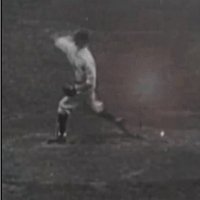 |
|||||
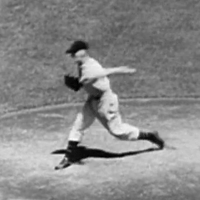 |
|||||
Walter Johnson, Pete Alexander, Carl Hubbell
These old-time greats incorporated a fair amount of momentum into their motions, relying particularly on a strong initial move toward the plate that allowed for a powerful-yet-efficient journey into foot strike. They did not “stop at the top” with a pause at maximum leg lift, so there was no changing of gears or appearance of violence. Players like Walter Johnson and Pete Alexander made pitching look easy, even while they were pumping high-octane gas, as they relied on the fundamental aspects of hip-shoulder separation to generate torque. Rather than scapular loads or hip-whip strategies to invoke velocity, they simply used a big upper-body twist paired with a good delay of trunk rotation after reaching foot strike to allow the rotational elements to reach a maximum of torque.
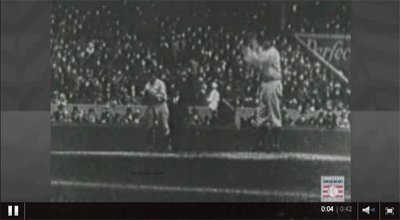
War-Time Pitchers (1940-1975)
Perhaps the fog of war had consumed the sensibilities of pitchers during this time period, which was overshadowed with the conflicts of Vietnam, Korea, and World War II, because the popular mechanics during this time were chock-full of aggression and deception. Many of the elite pitchers introduced giant leg lifts that created severe imbalances, with a literal “rear back and throw” methodology, and the implication on imposing hitters was to be faced with obscured arm paths until very late in the pitcher's delivery.
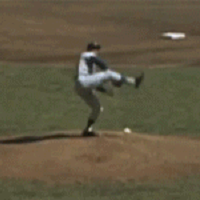 |
|||||
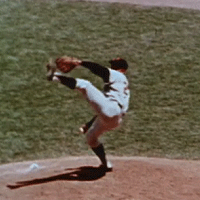 |
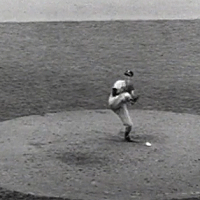 |
||||
Juan Marichal, Warren Spahn, Sandy Koufax
Along with the big leg lifts came huge momentum, as pitchers realized the gains to be made with extra power en route to the plate. The mound had been set at 15 inches since the beginning of the century (though some grounds crews were more liberal with that ruling), but the height of the hill became an issue as pitchers began to take greater advantage of the mound's slope. The giant lifts and fast deliveries were augmented by this gravitational advantage, allowing pitchers to release the baseball from a closer distance than had been achieved in the past, and the ensuing dominance fueled the league's decision to lower the mound. The combination of high levels of kinetic energy surging through imbalanced frames also resulted in more instances of poor posture and haphazard release points, but the stuff was so nasty and the subterfuge of deception was so effective that hitters were kept on the defensive.

Modern-Time Pitchers (1976 – present)
In some ways, the evolution of pitching has come full circle. If we continue the exercise and focus on the Hall-worthy candidates of the last 20 years, we see a group of players who appreciated all of the elements on the mechanics report card. The holy triumvirate of Randy Johnson, Pedro Martinez, and Greg Maddux emphasized balance throughout their deliveries, and they maintained that balance after foot strike, culminating in plus posture that would make the pitchers of 100 years ago proud.
 |
|||||
 |
|||||
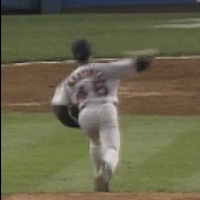 |
|||||
Randy Johnson, Greg Maddux, Pedro Martinez
Each of these modern day Hall of Famers was also a proponent of momentum, perhaps not to the extent of the high-mound stars of the 1950s and '60s, but with greater emphasis than is often recognized. Two of the undisputed top arms of the 1970s and '80s were Tom Seaver and Nolan Ryan, each of whom had 70-grade momentum at peak. Many of the elite pitchers of MLB today also feature a plus burst to the plate, including Justin Verlander, Felix Hernandez, Yu Darvish, and Jose Fernandez (though Clayton Kershaw's stride methodology is a unique snowflake).

What have we learned?
Here we are in 2014, with over a century of pitching evolution in the books and the video capabilities to study and learn from our past, yet many of the lessons have not been fully absorbed, a fact that becomes more apparent when we take a step back and look at the player population as a whole.
Balance is a point of emphasis in today's game, which is an excellent development when viewed in a vacuum, but the instruction has gone so far in that direction that stability often comes at the expense of momentum. The “don't rush” mentality might make life easier on pitchers who lack the functional strength to sustain balance in the face of increased levels of kinetic energy, but for these pitchers it is more critical to structure conditioning regimens that properly prepares them for a life spent on the mound. A delivery that coddles these weak links in the kinetic chain can be destructive, especially when one considers the potential downside to a motion that derives all of its force from the upper half.

Top prospect Lucas Giolito is an extreme example of the coaching paradigm which encourages a slow pace to the plate in order to preserve balance. The thought process derives from the concept that pitchers who utilize strong momentum are being too violent in their deliveries, and coaches have shied away since violence has become a red flag in today's world of hypersensitivity to pitcher injury. The problem with this conceptualization is that it misses the importance of the lower body in safely generating velocity, and those pitchers who take a glacial pace into foot strike prior to exploding with raw torque and pure arm strength (such as Giolito) are actually increasing the kinetic toll on their fragile throwing arms.
Of course, the theoretical contradictions don't end with momentum. Despite the general adherence to a stride strategy that favors balance, such stability is often ignored once the pitcher hits foot strike. At this point in the delivery, the emphasis often shifts to creating a tall release point in the quest for downhill plane. The problem is that the human shoulder is not designed to throw over-the-top with a balanced posture, so pitchers must incur spine-tilt in order to find that high slot.
They say that pitching a baseball is an unnatural act, but it doesn't have to be quite so unnatural. The shoulder is essentially a ball-and-socket joint, but it is not hinged like a G.I. Joe action figure, and it has a limited range of motion. Humans have been throwing projectiles for thousands of years, and the pitchers of 100 years ago who threw sidearm en route to 300-inning seasons were taking better advantage of the shoulder's natural structure. But throwing over-the-top with a tilted spine or exaggerating the pitcher's angle of shoulder abduction in the quest for downhill plane is unnatural, and it places more stress on the muscles and tissues of the shoulder.
Even getting past the anatomical issues, coaches who encourage over-the-top deliveries are engaging in selective tunnel vision, focusing on the benefits of downhill plane without considering the functional costs associated with poor posture. These costs include decreased distance at release point and a barrier to achieving a consistent arm slot due to the tilted spine. The lack of consistency at release point flies in the face of the slow-momentum strategy that is intent toward finding balance, which brings to question the need for a slow delivery in the first place. Tack on the fact that these slow-pace pitchers are asked to greatly increase their speed into foot strike with runners on base, hence requiring the mastery of two disparate timing patterns when most pitchers struggle to repeat just one of those time signatures.
To summarize, today's pitchers are being tasked with throwing harder than their predecessors, but are expected to use less of their physical athleticism to achieve that goal. These pitchers are encouraged to emphasize stability in the delivery up until foot strike, at which point the goal changes to the manipulation of extreme angles, and this occurs during the most volatile phase of the motion. They are told to slow down from the windup so as not to exude too much effort, yet to hurry up from the stretch in case a baserunner might be trying to steal, and to contort the body in either case in order to exploit an unnatural arm angle.
A pitcher must learn to repeat the delivery in spite of these glaring obstacles. If the pitcher happens to get hurt, he should just remember that throwing a baseball is an unnatural act; and when the arm has recovered, he can get back to work on improving that downhill plane.
Thank you for reading
This is a free article. If you enjoyed it, consider subscribing to Baseball Prospectus. Subscriptions support ongoing public baseball research and analysis in an increasingly proprietary environment.
Subscribe now
Also that still of Carl Hubbell's arm angle is crazy looking
I have been fighting the good fight against ideas like "don't rush" and "get on top" for almost 10 years. The modern trends become more apparent when looking at the entire population of today's pitchers, and I find myself making similar notes on dozens of guys for the SP Guide - and then I watch video of pitchers from 100 years ago and agonize over the reality that they were more efficient.
Unnatural: Jered Weaver, Ubaldo Jimenez. I don't know what the hell Alex Wood was drinking when he came up with his delivery
What do you think of Chris Sale? His delivery reminds me of Elaine from Seinfeld trying to dance. I mean, the guy is great, but his delivery scares the hell out of me. Is he more unorthodox or unnatural(if that destinction makes sense)? Do you see an injury risk in a guy like that because of the delivery and lack of physical strength?
There are a lot of red flags in Sale's delivery, from the hunched-over imbalance to the exaggerated arm angles, and his tendency for elbow drag is definitely a risk factor. His frame does not invoke the idea that he can withstand the risk factors, but there is no telling whether he has tremendous joint integrity that will allow him to hold up. Jake Peavy also had tons of risk factors in his elbow, but his joint integrity was so ridiculously strong that when the system snapped, it was his Latissimus Dorsi completely detaching - which is just ridiculous when you consider the kinetic chain.
Sale is actually very efficient from foot strike to release point, during the highest-energy phases of the delivery, and this often gets overlooked due to all of the other funk in his motion.
Bob Feller is a great example - they were experiments set up to measure his high-90s heat, which he accomplished with amazing torque in conjunction with excellent momentum. He also had awesome raw strength, which he credited with growing up on a farm and doing physical labor during his youth. My contention is that today's pitchers could throw harder more safely if they worked on balancing the mechanical elements that contribute to velocity and better-conditioned themselves to do the task.